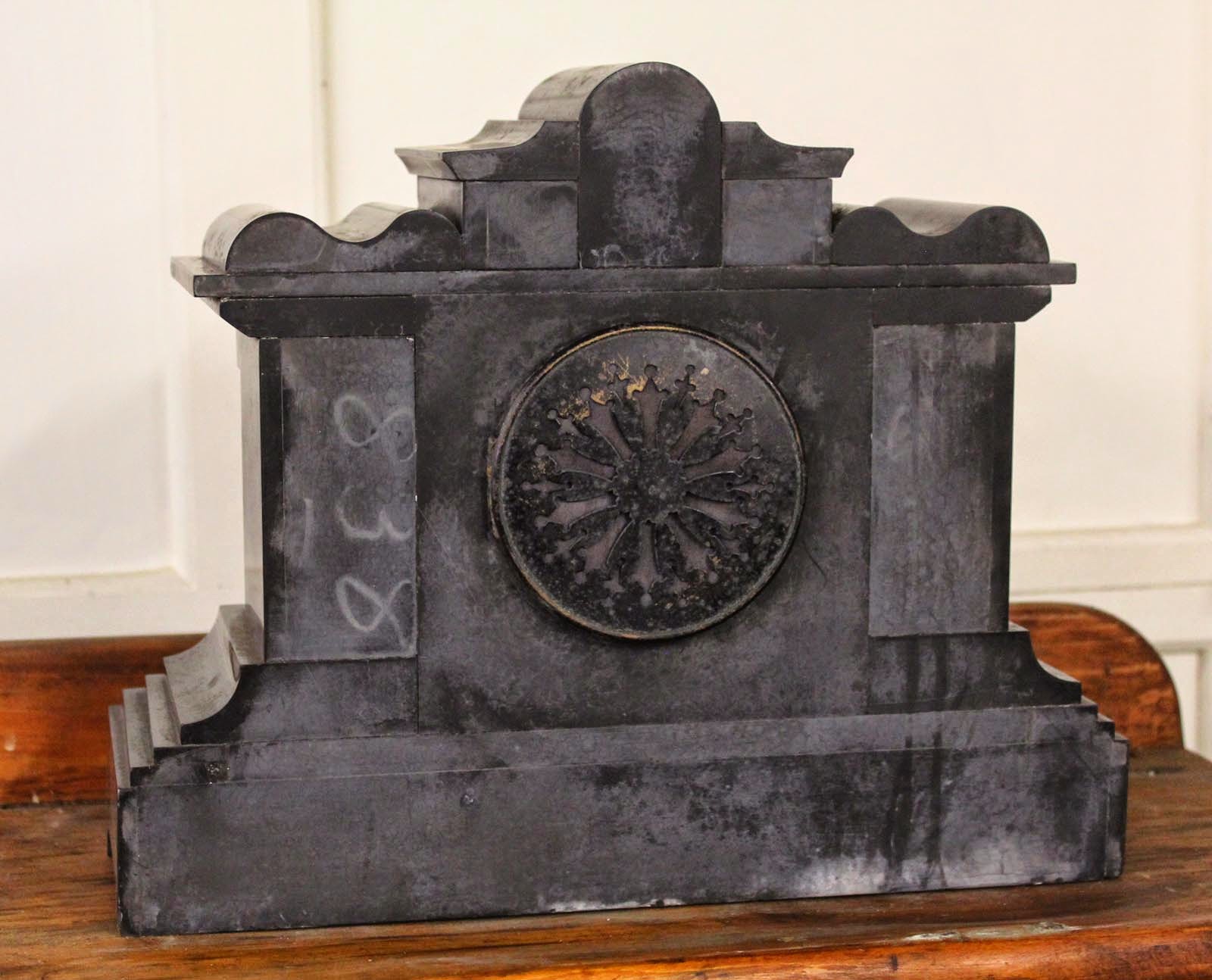Although prying open crates proved disappointing, opening the numerous trunks has been much more satisfying. Here's one I opened one yesterday.
This is one of the smaller trunks, only about knee-high in height. (I really need to keep a tape measurer on-site.)
Unlike the crates, the trunks open with ease.
It's like opening a treasure box.
This particular trunk proved to be holding four items.
 |
| A pink kerosene lantern, banged up and missing its glass. |
 |
| A tiny red kerosene lantern, a little banged up, but otherwise in good shape. |
 |
| A heavily shellacked print in a rustic frame. |
 |
| And one clock. |
The clock is a Wm. L. Gilbert "Curfew" clock. The William L. Gilbert Clock Company, based in Winsted, Connecticut, operated from 1871 until 1934. The "Curfew" was produced in a number of variations during the twentieth century; one of the unifying features was the bell on top. The "Curfew" was produced during the early 1900s.
 |
| Back of the "Curfew" clock. |
 |
| "Curfew" movement. |
 |
| "Curfew" dial. |
 |
| A slightly blurry photo of the maker's name on the dial. |
 |
| One of the clock's feet. |
Although the founder of the Gilbert Clock Company was long gone by
the time this clock was produced, he is an interesting character, so
I've put a little bit of his story into this post.
William
Lewis Gilbert (1806-1890) grew up on a Litchfield farm, moving to
Winsted as an adult. He served in the State Legislature for two terms,
during which time he pushed through the charters for the Winsted Bank
and for the Connecticut Western Railroad.
Gilbert's clockmaking career
began in 1828, when he partnered with his brother-in-law, George Marsh,
in Bristol, Connecticut. This new business made clock parts for Jerome
& Darrow for three years, before finally manufacturing entire clock
movements. They relocated to Farmington for several years.
Gilbert
returned to Bristol in 1835 to start a new company, called Birge,
Gilbert & Co. This was soon followed by Gilbert, Grant & Co. In
1841, Gilbert relocated again, this time to Winsted, where he purchased a
clock factory. The business expanded to Ansonia from 1857 until 1862,
and to Williamsburg, NY from 1863 until 1871.
Disaster
struck in 1871, when Gilbert's clock factory in Winsted burned down.
Gilbert turned disaster into opportunity, reorganizing his business as
the William L. Gilbert Clock Company and constructing new, larger, and
improved factory buildings equipped with the best machinery.
Gilbert
had a side business as a banker, taking over the former Winsted Bank
building in 1867. He was also involved in the creation of a railroad
line from Hartford to Millerton, NY. Both banking and railroads were
highly profitable ventures during the nineteenth century, and Gilbert
built up a small fortune.
Gilbert was a generous philanthropist,
donating
$800,000 to the town of Winsted and $50,000 to La Teche Seminary
Agricultural College in New Orleans, which was renamed the Gilbert
Academy and Agricultural College after his death. The
Gilbert Academy
began as a home for African-American orphans whose fathers died
fighting in the Civil War, and eventually became a private high school
for African Americans.
He also built a home for orphans
in Winsted, spending his last Christmas with the children of the
orphanage. The Gilbert Home for Friendless Children, established after
his death, took in children whose parents could not afford to take care
of them. Winsted's Gilbert High School, built with his bequest, was a
semi-private school that educated boys and girls from Winsted and
surrounding towns.
Gilbert's clockmaking company
continued after his death, until 1957, when it became a division of the
General-Gilbert Corporation. The clock division was sold to Spartus
Corporation of Chicago in 1964.























































